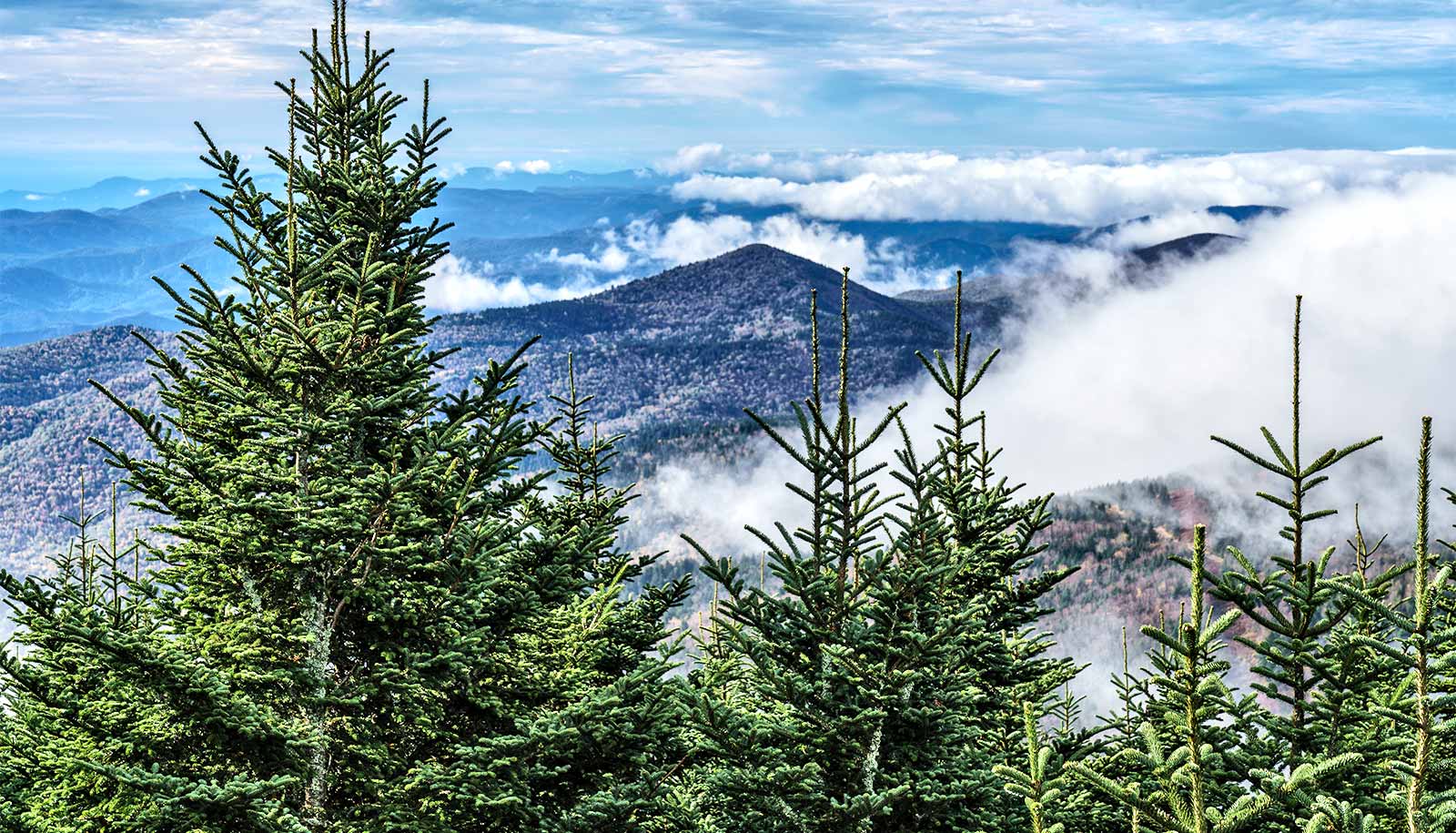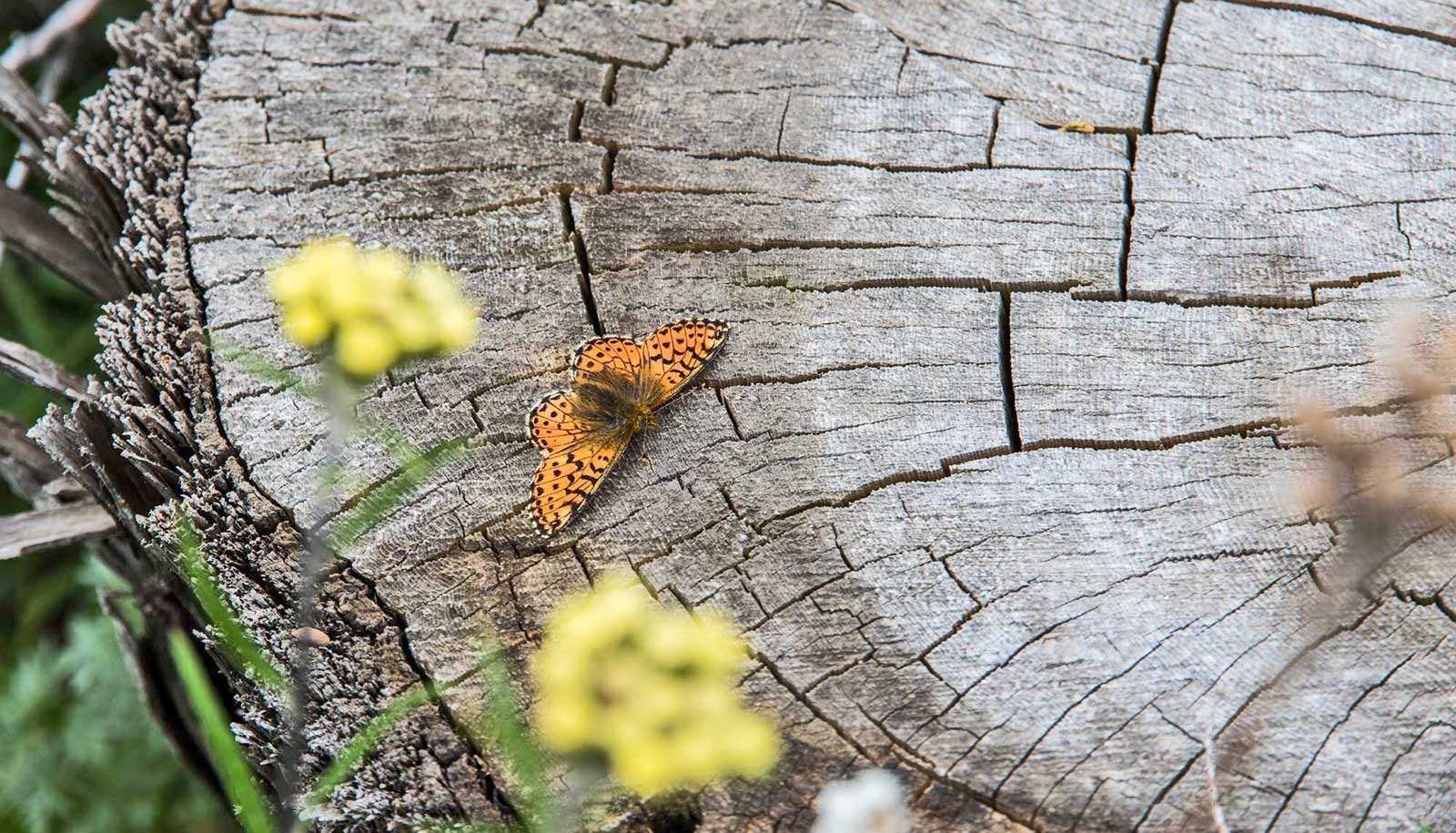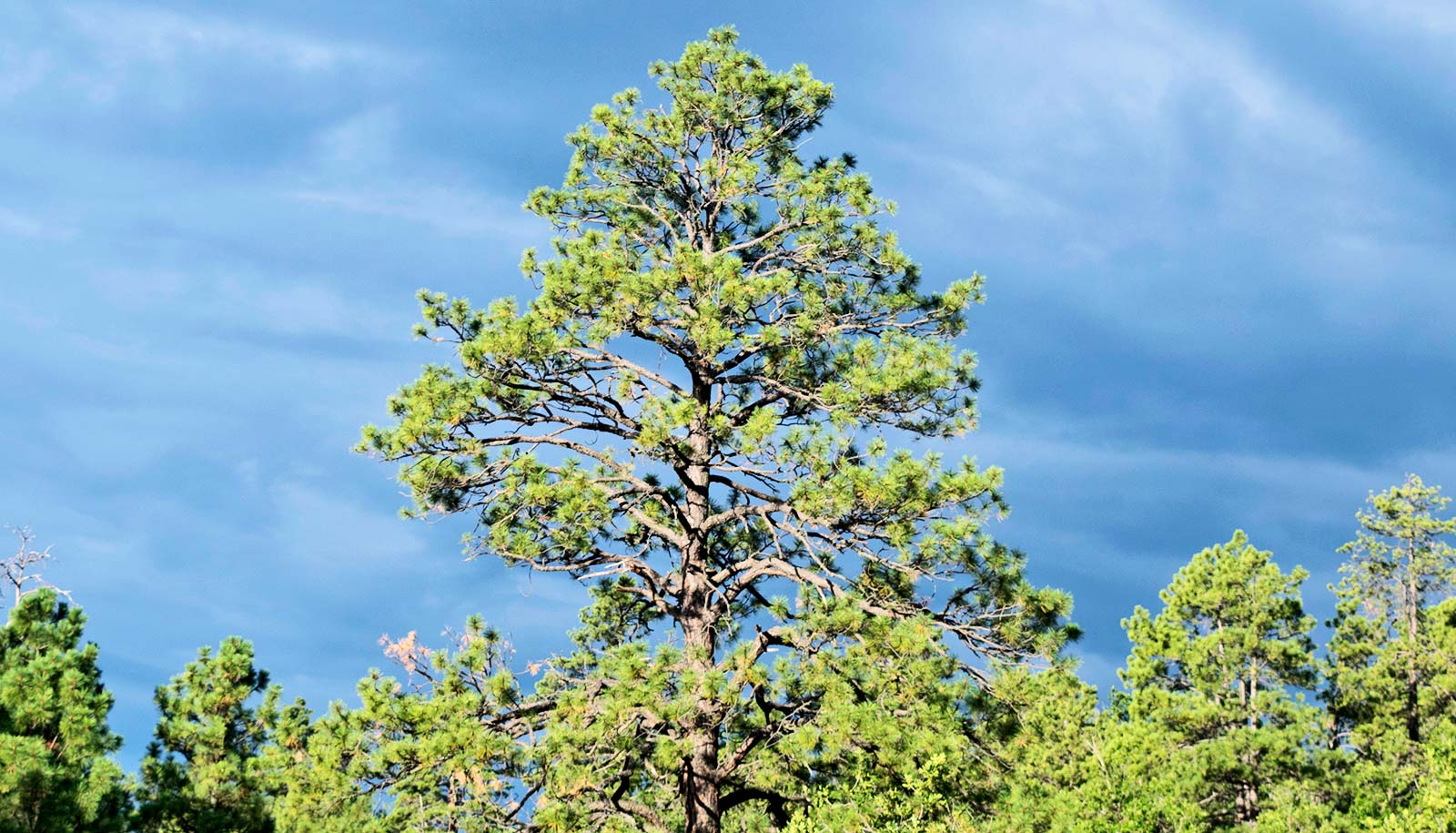Trees growing in wetter regions are more sensitive to drought, according to a new study.
Scientists have long debated whether arid conditions make trees more or less resilient to drought. It seems intuitive that trees living at their biological limits will be most vulnerable to climate change, since even just a little extra stress could tip them past the brink.
On the other hand, these populations have adapted to a harsher setting, so they might be more capable of withstanding a drought.
According to the study in the journal Science, greater water availability could “spoil” trees by reducing their adaptations to drought.
“And that’s really critical to understand when we’re thinking about the global vulnerability of forest carbon stocks and forest health,” says ecologist Joan Dudney, an assistant professor at the University of California, Santa Barbara Bren School of Environmental Science & Management and in the Environmental Studies Program. “You don’t want to be a ‘spoiled’ tree when facing a major drought.”
Dudney and her coauthors expected trees growing in the most arid regions to be more sensitive to drought, since they’re already living at the edge of their limits. What’s more, climate change models predict that these regions will experience more rapid drying than wetter regions. This shift in climate could expose trees to conditions beyond their adaptive capacity.
To measure drought sensitivity, the authors analyzed 6.6 million tree ring samples from 122 species worldwide. For each year, they measured whether the tree grew faster or slower than average based on its ring width. They linked these trends with historic climate data, including precipitation and temperature.
The team then compared drought responses across different regions.
“As you move to the drier edge of a species’ range, trees become less and less sensitive to drought,” says lead author Robert Heilmayr, an environmental economist also in the environmental studies program and at the Bren School. “Those trees are actually quite resilient.”
Dudney, Heilmayr, and coauthor Frances Moore were inspired, in part, by the work of UCSB professor Tamma Carleton on the effects climate change has on human populations.
“This paper highlights the value of cross-disciplinary scientific work,” says Moore, an associate professor at UC Davis. “We were able to adapt methods from economics originally developed to study how people and businesses adjust to a changing climate and apply them to the ecological context to study forest sensitivity to drought.”
“A heatwave is likely to kill more people in a cool place like Seattle than in hotter cities like Phoenix,” Heilmayr says. The Southwest is already quite hot, so heatwaves there are scorching. But the region’s cities are adapted to an extreme climate, he points out.
Now we know that forests display similar trends. Unfortunately, warmer regions are slated to get disproportionately drier in the coming decades.
“There is a pretty large portion of species’ ranges that are going to face a completely novel climate, something that those species don’t see anywhere in their range today,” Heilmayr explains.
The authors found that 11% of an average species’ range in 2100 will be drier than the driest parts of their historic range. This increases to over 50% for some species.
“Broadly, our research highlights that very few forests will be unaffected by climate change,” Dudney says. “Even wetter forests are more threatened than we thought.”
But there is a flip side of the coin. Species have a reservoir of drought-hearty stock in the drier parts of their range that could bolster forests in wetter areas.
Previous research from UC Santa Barbara revealed that many species do have the capacity to adapt to environmental change. However, those researchers also found that trees migrate slowly from one generation to the next. That means human intervention—such as assisted migration—may be necessary in order to take advantage of this genetic diversity.
Source: UC Santa Barbara



